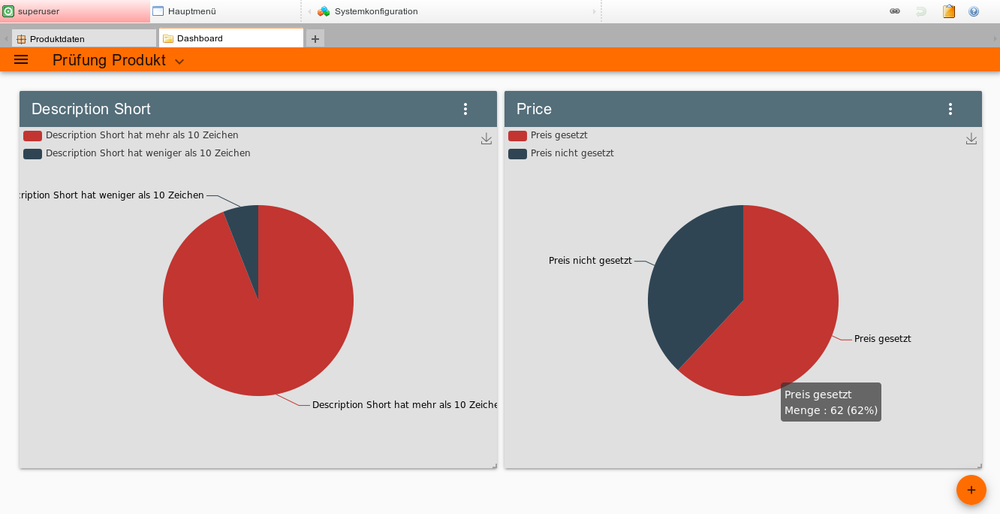Quality Defects in Product Information – with unpleasant consequences
Incorrect or missing specifications in product descriptions can have unpleasant consequences for manufacturers and retailers. Let's take a look at an example (manufacturer and device names have been changed) - the technical features of a tablet:
- Manufacturer: SANSON
- Model: UNIVERSUM Tab 4 7.0 WiFi SM-T230
- Features: Infra, WLAN 802.11a/b/g/n 2.4 + 5 GHz, Wi-Fi direct
- Mobile network: 4G 850/900/1.900/2.100 MHz / GSM: 850/900/1.800/1.900 MHz (WRONG FEATURE!)
This device has no mobile radio module on board. However, many customers buy the device on the assumption that it is actually equipped with a mobile radio module. Now, who is liable for the false technical data specified in the sales documents? From a legal point of view, the case looks as follows: the customer has the right to return an incorrectly labeled product. In our case, the device lacks a technical property that has been explicitly specified. The return procedure is possible because the device does not exist with a GSM module and therefore the seller will also not be able to procure it. Even a claim for damages is theoretically possible.
With a larger number of units sold, one can imagine the logistical and organizational effort involved in handling all these cases.
Incorrect product information can be avoided
How can this error in the product description occur, and how can a company ensure that such a situation will be avoided in the future?
As far as the reasons for these errors are concerned, one should look at the product management processes of many companies: In most cases, an ERP system is available, but more detailed information on products is stored decentralized, i.e. on local machines, in Excel, Word, InDesign, a CMS or shop system. This "more detailed information" in our example – unfortunately – also includes the technical specifications of the product. When editing a large number of documents that exist in parallel on the same product, careless mistakes or “slips of the pen” can occur very quickly.
n particular, the strategy of duplicating existing documents on a product and using them as the basis for another product often leads to incorrect data in the product description.
In addition, the quality of individual data records is usually not checked automatically. Versioning of documents or data records is done rarely or even not at all. The data is usually not consolidated or synchronized between systems. There is no unified, comprehensive and complete database for product marketing, sales and logistics.
Functions to reduce the error rate
So what would be necessary to rule out the error?
Manufacturers and retailers should use clearly defined central data sources for product data management and network them comprehensively via interfaces (e.g., REST) and also supply data to the outgoing channels via these interfaces. Ideally, documents on the product are only generated dynamically live via data records and templates for formatting. Supporting functions for Data Quality Management (DQM) should be implemented in this central data pool, the PIM system.
What functions for data quality management should be provided by an enterprise PIM system?
Automated validation of product information
- Automatic detection of quality defects
- Plausibility checks directly during data entry
Tools for reporting and access
- Data quality overview in the PIM system
- Optical support through functional data quality charts
- Monitoring and reporting of the maintenance status of products – as a percentage by fields and information units.
- Quick access to faulty records directly from the charts
Workflow design for DQM processes
- Workflows for testing, optimizing and releasing products
- Easy-to-use workflows
Quality improvement through top => down inheritance
- Redundancy avoidance through inheritance, e. g. from product masters to variants
- Inheritance of a high percentage of product information results in a considerable increase in quality and a significantly lower error rate.
- Use of dynamic attributes in texts via attribute tagging. This means that the most current, correct technical data for the product is always displayed – also within longer texts.
Integration of Translation Memory (TM) Systems
Quality control of translations by:
- Connection to TM systems
- TM monitoring
Real-time integration of supplier data
- Use of digital catalog formats (e.g., BMEcat) with status indicators such as new, update, delete, etc.
- Extensive us of BMECat also to update product information (modes: NEW, UPDATE, DELETE).
Data optimization via ETL => Landing Area and Data Cleansing
- Use of ETL with zones such as a landing area for data cleansing.
Targeting of media assets:
- Automatic generation of target formats via crop profiles, resize profiles, compression profiles, video conversion profiles.
- Creating and saving asset profiles for target channels and use cases.

In particular, the strategy of duplicating existing documents on a product and using them as the basis for another product often leads to incorrect data in the product description.
In addition, the quality of individual data records is usually not checked automatically. Versioning of documents or data records is done rarely or even not at all. The data is usually not consolidated or synchronized between systems. There is no unified, comprehensive and complete database for product marketing, sales and logistics.
Functions to reduce the error rate
So what would be necessary to rule out the error?
Manufacturers and retailers should use clearly defined central data sources for product data management and network them comprehensively via interfaces (e.g., REST) and also supply data to the outgoing channels via these interfaces. Ideally, documents on the product are only generated dynamically live via data records and templates for formatting. Supporting functions for Data Quality Management (DQM) should be implemented in this central data pool, the PIM system.
What functions for data quality management should be provided by an enterprise PIM system?
Automated validation of product information
- Automatic detection of quality defects
- Plausibility checks directly during data entry
Tools for reporting and access
- Data quality overview in the PIM system
- Optical support through functional data quality charts
- Monitoring and reporting of the maintenance status of products – as a percentage by fields and information units.
- Quick access to faulty records directly from the charts
Workflow design for DQM processes
- Workflows for testing, optimizing and releasing products
- Easy-to-use workflows
Quality improvement through top => down inheritance
- Redundancy avoidance through inheritance, e. g. from product masters to variants
- Inheritance of a high percentage of product information results in a considerable increase in quality and a significantly lower error rate.
- Use of dynamic attributes in texts via attribute tagging. This means that the most current, correct technical data for the product is always displayed – also within longer texts.
Integration of Translation Memory (TM) Systems
- Quality control of translations by:
- Connection to TM systems
- TM monitoring
Real-time integration of supplier data
- Use of digital catalog formats (e.g., BMEcat) with status indicators such as new, update, delete, etc.
- Extensive us of BMECat also to update product information (modes: NEW, UPDATE, DELETE).
Data optimization via ETL => Landing Area and Data Cleansing
- Use of ETL with zones such as a landing area for data cleansing.
Targeting of media assets:
- Automatic generation of target formats via crop profiles, resize profiles, compression profiles, video conversion profiles.
- Creating and saving asset profiles for target channels and use cases.
Error rate of 0% is achievable
As in many other areas, the right technology can significantly improve your internal processes. By using a PIM system with the functions described here, it is easy to reduce the error rate in your product data. This will save you from unpleasant situations with handling returns and spare parts deliveries due to incorrect product descriptions.
Contact
Sepia GmbH & Co. KG
Ernst-Gnoss-Strasse 22
D-40219 Düsseldorf - Germany
Phone: +49 211 51 419 75
Phone alternative: +49 211 74 958 712 0
E-Mail: info@sepia.de
Looking for consultation or a web demo?
Get it here.



